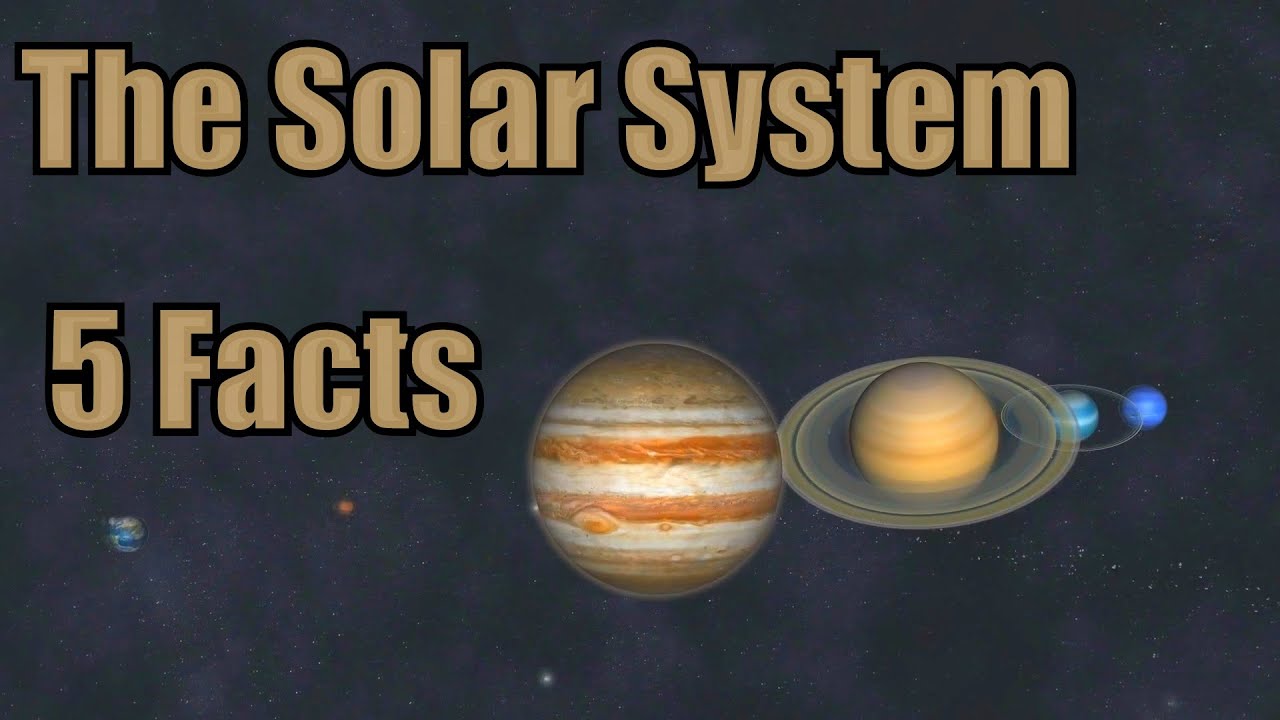The Sun and its orbiting celestial objects collectively make up the Solar System. The star system came into existence 4.6 billion years ago when a massive intergalactic molecular cloud collapsed due to intense gravity. The Sun accounts for the overwhelming majority (99%) of the entire system’s mass, while the planet Jupiter holds most of the remaining matter. Including Jupiter, the Solar System is home to eight other planets. The Sun and all celestial objects held together by gravitational forces constitute our Solar System. These include the eight planets: Mercury, Venus, Earth, Mars, Jupiter, Saturn, Uranus and Neptune, along with dwarf planets like Pluto, numerous moons, and an abundance of meteoroids, asteroids and comets. Apart from our own Solar System, we have identified thousands of planetary systems revolving around other stars within the Milky Way galaxy.
Now, let’s explore 5 incredible facts about Solar System.
Dwarf Planets
The International Astronomical Union, which is responsible for categorising celestial bodies, determined in 2006 that a fresh classification of objects was necessary. As part of this reclassification, Pluto, the Solar System’s enigmatic ninth planet, was grouped with four other entities, all smaller than the moon, under the new category of “dwarf planet.” According to some experts, the Solar System could have as many as 50 dwarf planets.
Eris, the most extensive dwarf planet, is only marginally larger than Pluto, with a diameter of 2,326 km. It was discovered in 2003. It orbits at a mean distance of 68 astronomical units (AU), equivalent to 68 times the Earth’s distance from the Sun. It takes roughly 561 Earth years to complete one revolution around the Sun. In comparison, Pluto, which was discovered in 1930, orbits the Sun at an average distance of 39.5 times the Earth’s distance and has a diameter of 2,302 km. Makemake, which was first identified in 2005, lacks any confirmed natural satellites. It orbits the Sun at a distance of 45.3 times that of Earth and takes more than 305 years to complete one revolution around it.
Ceres, which was first observed by astronomers in 1801 and initially classified as a planet before being recognised as an asteroid, was reclassified as a dwarf planet in 2006. It is the nearest dwarf planet to Earth.
Saturn’s Rings Are Composed of 90% of Water
Saturn is home to the most spectacular ice rings in the Solar System. Due to its substantial distance from the Sun, the water within its ring system has frozen into ice. Although all four gas giants have ring systems, the remaining three were only revealed in the 1970s when spacecraft were dispatched to investigate them. Saturn’s ring system was the first to be visible through telescopes on Earth.
Currently, Saturn’s ring system is made up of about 90% water ice. It is thought that the rings were originally made entirely of pure ice before being mixed with rocky meteoroid debris and dust. The ring system’s composition is atypical compared to the half-ice and half-rock blend predicted for celestial objects located in the outer Solar System. In addition, the low densities of Saturn’s inner moons imply that they, too, contain an extraordinary amount of ice.
Real Colour of the Sun
The Sun’s colour is white, resulting from its emission of all spectrum colours in more or less equal amounts. This blend is termed “white” in optics, which is why we observe a diverse range of hues in the natural world when exposed to sunlight. For example, all exterior items would appear green or dark if the sunlight were exclusively green. The fact that we can perceive the red of a rose or the blue of a butterfly’s wing under sunlight is due to the presence of red and blue light within the sunlight. The same is valid for all other colours. If a light bulb engineer wishes to create a bulb that mimics the Sun and produces natural light, they will design a white bulb rather than a yellow one. This is because the real colour of Sun contains all of the substituent fundamental colours in the visible spectrum, which we optically perceive in a rainbow formed by the splitting of sunlight by misty clouds. The fact that none of these colours is missing from sunlight provides direct evidence that it is indeed white in colour.
The Sun emits all visible light colours as well as all other frequencies of electromagnetic waves. This includes microwaves, visible light, radio waves, infrared, ultraviolet, X-rays and gamma rays. This broad spectrum of emissions is because the Sun is a thermal body that emits light through thermal radiation. Similar to a lump of hot coal that glows, the Sun also glows in all colours due to its high temperature. This is why incandescent light bulbs, which contain heated metal filaments that glow like the Sun, can produce light very similar to natural sunlight.
Kuiper Belt
The Kuiper Belt is a region beyond Neptune that is shaped like a doughnut and contains countless icy bodies, also known as KBOs (Kuiper Belt objects) or trans-Neptunian objects. Similar to the asteroid belt, it is a remnant from the early days of the Solar System and was influenced by a giant planet, but it is thicker and more disk-like in shape. NASA’s New Horizons mission visited Arrokoth and Pluto in the Kuiper Belt.
The region beyond Neptune, known as the Kuiper Belt, is named after the astronomer Gerard Kuiper. In 1992, a KBO called Albion was discovered, which was the first KBO discovered since Pluto in 1930 and Charon in 1978. Since Albion’s discovery, thousands of KBOs have been identified, and it is estimated that over 100,000 KBOs with a diameter of more than 100 km (62 mi) exist in the Kuiper Belt. The Kuiper Belt and the Oort cloud are separate entities. The Oort cloud is a hypothetical, mostly spherical region believed to be about a thousand times more distant from the Sun than the Kuiper Belt. The objects in the Kuiper Belt, along with those in the scattered disk and any potential objects in the Hills cloud or Oort cloud, are all categorised as trans-Neptunian objects.
Origin of the Solar System
There are a few prominent theories about the origin of our Solar System.
Protoplanet Theory
A cluster of stars is formed by a dense interstellar cloud. As the dense regions of the cloud come together and merge, small blobs with random spins are created, which then form stars with low rotation rates. Planets are formed from smaller blobs that are captured by the star. Although the small blobs would initially have higher rotation rates than the planets in our Solar System, the theory explains this by proposing that the “planetary blobs” split into planets and their accompanying satellites. However, it is unclear how the planets came to be confined to a plane or why Earth rotation and other solar planets’ rotations are similar. The prevailing theory suggests that protoplanets emerge from planetesimals that are a few kilometres in size. These planetesimals affect each other’s orbits due to gravity and eventually collide, gradually forming the primary planets.
Accretion Theory
The formation of our Solar System can be explained by the core accretion theory, which begins with a rotating cloud of dust. As the cloud accumulates matter through gravitational attraction, it eventually forms the Sun at the centre of the Solar System, having gathered 99.8% of the matter. Solar winds swept helium and hydrogen atoms inwards as they were smaller and lighter. However, heavier elements could not be pulled in due to their mass, so they merged and formed planets. Through collisions and gravitational perturbations, kilometre-sized planetesimals gradually coalesced into protoplanets, which in turn became dominant planets. The planets, including Earth, formed into spheres as the heavier material sank to create inner cores of elements like iron and zinc, while lighter materials formed the crust.



